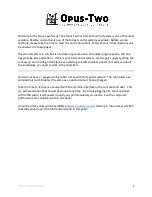
7
To establish a benchmark
or “dry standard” for the material you are
measuring, first take readings in areas that you know are dry, or acceptable.
Then take readings on areas that you know
are wet. These “dry to wet”
readings should be used as the reference points against which subsequent
readings are compared. One should not expect that the reference scales for
meters of different brands and types (resistance /capacitance) will read alike
on the same material. The benchmark may be different from one meter
type/brand to another because a given meter
s’ response depends on the
material used for calibration and on the meter’s range.
The entire sensor plate should be in contact with the surface of the material
being measured. The sensor plate measures 2-
1/2” x 3-1/2”.
Readings obtained with ProScan and pin-less moisture meters in general, are
affected by the amount of pressure applied to the material. Apply and
maintain uniform, firm pressure to the meter when taking readings.
The meter’s RF signal penetrates to ¾” – 1”. Material underneath or behind
the surface being tested may influence the readings. This includes metal
studs, wiring, and in the case of concrete, rebar and aggregate.
The meter works best on smooth, clean surfaces. Surface moisture slightly
increases the readings. Wipe obvious moisture from the board surface to
minimize this effect.
Testing Concrete Slabs for Flooring Applications
Pinless moisture meters can be an effective tool to check comparative
moisture conditions in concrete slabs. They can tell you where there may be
excess moisture and help determine if you need to conduct further testing,
and identify specific areas on which that testing should be performed.
ProScan cannot provide quantitative results as a basis for acceptance of a
slab for installation of moisture-sensitive flooring systems. ASTM Test Method
F2170 (RH using in situ probes), F1869 (calcium chloride), and F2420 (RH on
surface using insulated hood) provide quantitative information for determining
if moisture levels are within specific limits.































